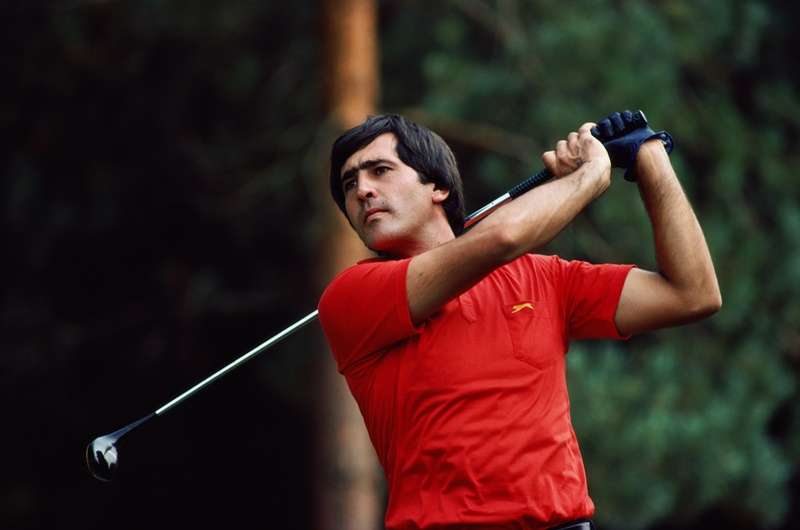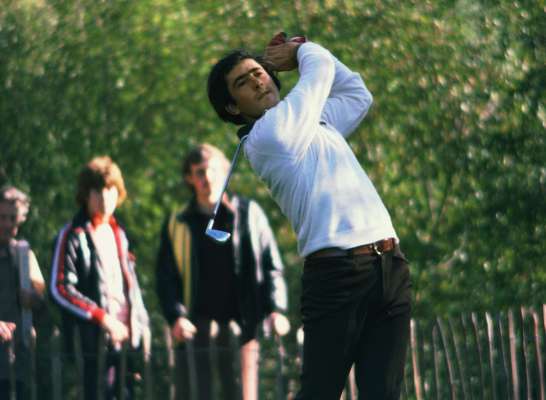Featured
Huggan column: Time to make pros use ‘real’ woods

Old-school: Seve Ballesteros lets fly with an old persimmon wood when driving the ball was one of the toughest aspects of the game (photo by Getty Images)
by John Huggan
“Distance is everything now. My problem is that, while I was brilliant with a wooden driver, I’m not the same with a metal club. I remember I used to outdrive Des Smyth by 40 yards. But as soon as he got a metal club he was right beside me.” – Ian Woosnam
Woosie is right, of course. He was outstanding with a persimmon driver in his hands. So was Greg Norman. And Nick Price. All three became the best golfer in the world and separated themselves from their competition through exceptional ability with what used to be the most difficult – and longest – club in the bag.
Seve Ballesteros was another. Yes, the late, great Spaniard owned a genius short game. And yes, he may have been wild off the tee at times. But he was also the hitter of many magnificently shaped and flighted drives. All without the huge advantage that comes with wielding a 21st-century driver, aka a very large hunk of metal on the end of a shaft.
Which got me thinking. How would the modern player, one reared on the modern technology that has sadly led to an almost total destruction of sophistication in golf at the highest level, get on with a persimmon-headed club in his hands? My guess going in was that, while these very talented individuals might need a short period of adjustment, they would very quickly adapt to the different feel. I also felt that, just as promptly, they would start to enjoy themselves.
Anyway, on to the practice ground at Wentworth I went, armed with a Harry Busson – a legendary club-maker formerly based at Walton Heath – persimmon driver and Hogan Apex 5-wood.
First stop was Matt Fitzpatrick. After eyeing the clubs rather suspiciously, he agreed to have a go with both. “I’ve never hit these before,” he admitted.
Not surprisingly for one so gifted, the young Yorkshireman produced two very acceptable shots. “In play,” he said with a smile. “But doesn’t the ball sound funny coming off the club?”
Next up was former Ryder Cup player, Peter Hanson. The Swede is old enough to remember when woods really were wooden and so was keen to have a go.
“I actually have a beautiful set of persimmon woods at home,” he said. “I love looking at them but I’ve never hit them. They are worth too much to take the risk.”
As you’d expect from one of the European game’s premier ball-strikers, Hanson was soon enough smashing shots down the range with obvious gusto. The only shame was that the modern ball’s propensity for flying straight did not allow the six-times European Tour winner to show off his shot-making skills. One of the big frustrations of modern metals is that “shaping” shots is almost impossible. The ball comes off the clubface at such a rate that aiming and hitting straight is invariably the only option. Clearly, I should have brought along some Balatas. Their increased spin would have encouraged the fades and draws that Hanson was trying to hit.
Still, an even more enthusiastic participant was waiting his turn. Jamie Donaldson, the man who earned the point that won the 2014 Ryder Cup, was almost licking his lips as he peeled the head cover off the driver. But he warmed up with a couple of 5-woods that started right of his aim and went even further right, much to the amusement of caddie Mick Donaghy.
The best was to come though. With the unblinking eye of a “Trackman” machine on his shots, Donaldson went after a few with the driver. At first, he was unable to get more than 260 yards of carry – somewhere around 25 yards shorter than his norm. But he wasn’t giving up. Eventually, the Welshman hit one “off the screws” – there really are screws on the face – and managed to fire a drive 272 yards through the air. Cue great jubilation.
And that is the difference. A good shot struck with 1980s technology isn’t that much different from one hit with up-to-date “stuff”. But a “miss” with persimmon/Balata – especially one hit out of the neck – is much more noticeable. It doesn’t take long to figure out that things weren’t quite so forgiving back in the day. Whaling away with impunity doesn’t work on anything like a consistent basis. Swinging at something like 85 per cent speed is about right. Which only adds to the challenge, of course.
At this point, a confession is in order. As a way of restoring a long-lost enthusiasm for hitting shots, my own bag is stocked with three persimmon woods (1-3-5) and Hogan blades (with leather grips). My interest in playing the game having waned over the years, I needed some sort of stimulus to get me out there again.
The solution was obvious: I’ve gone back to playing the sort of golf that I fell in love with in my youth. Admittedly, it helps that I care not a jot about my score these days. The handicap lapsed years ago, as did any lingering enthusiasm for competitive play. So the joy for me now is in the hitting of the ball. I simply want to hit “proper” shots that make a noise other than “clunk” at impact. And judging by what I witnessed at Wentworth last week, more than a few professionals wouldn’t mind doing the same.
Let’s end where we started.
“My feeling is that the time has come for pros and amateurs to use different equipment,” contends Woosie. “I’d let the amateurs play with whatever they want to. But not the pros. Nowadays they build swings to ‘fit’ the modern ball. In my day we couldn’t do that because the ball spun so much more. There was so much more variety so you had to adapt. I’m trying to get back to playing more ‘natural’, but the ball doesn’t let me. To a great extent, the modern equipment doesn’t work for me.”
*This article was originally published in TGP on 1 July 2016 – on sale every Wednesday in the UK for £1.50
Tagged Seve Ballesteros








